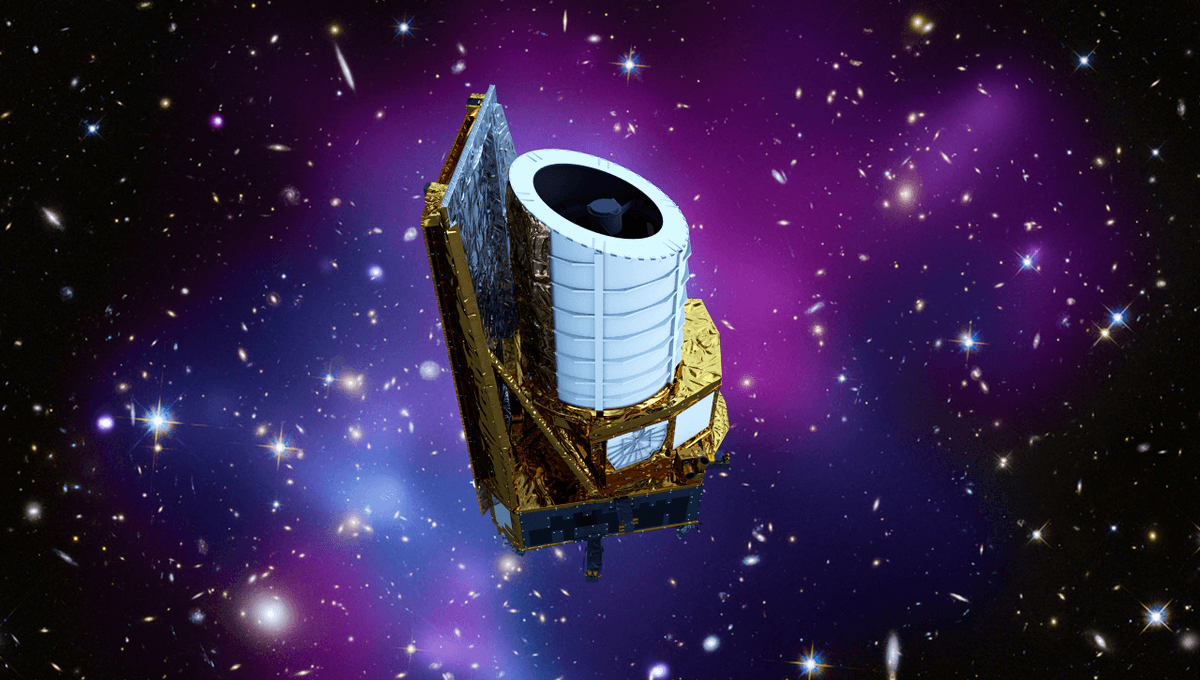
The Euclid Space Telescope’s mission is to map the dark matter and dark energy in the universe so we can learn their mysterious nature. Its wide field of view is crucial to this, but its resolution may not always be up to the task. Fortunately, however, we already have an instrument capable of filling at least part of the gap – the JWST.
Euclid and the JWST have two key features in common. Both operate in the near-infrared, at wavelengths predominantly too long for the human eye, and both will be located at Lagrange point 2. However, where the JWST has the capacity to peer back almost to the dawn of time or measure the atmospheres of planets around other stars. Euclid cannot go so deep.
Instead, Euclid’s strength lies in its wide field, 2.5 times times as large as the full Moon. In this way it will study some 1.5 billion galaxies across all the sky not obscured by the Milky Way or zodiacal light. It is hoped that what it learns about their shape and distribution will distinguish between competing models of the evolution of the cosmos.
“Where Webb can observe extremely far back in time and zoom into the details, Euclid can go fast and wide,” the European Space Agency (ESA) writes. “In a single observation Euclid can record the data from an area of the sky more than one hundred times bigger than that imaged by Webb’s camera, NIRCam.”
Euclid also has the rather useful feature of costing around 10 percent of the JWST’s eye-watering price. Being much smaller, it also won’t require the same slow and delicate unfolding.
Euclid will attempt to answer five of the biggest questions one can imagine, according to ESA:
- What is the structure and history of the cosmic web?
- What is the nature of dark matter?
- How has the expansion of the universe changed over time?
- What is the nature of dark energy?
- Is our understanding of gravity complete?
If it fulfils even one of these it will be a raging success. More likely, it will take us a few steps along the road to each of them, and hopefully point the way by which other instruments can take things further. In the short term, that will predominantly be the JWST.
Space.com quotes Euclid project scientist René Laureijs as saying, “It would be beautiful if the two telescopes are online and James Webb could follow up the new findings of Euclid.”
Euclid’s mirror is smaller than Hubble’s, let alone the JWST, so its resolution will be similarly limited. Lacking the capacity to see the universe in great detail, Euclid should find things of interest that require further exploration. In some cases this may be possible from Earth using telescopes that operate in visible light or radio waves. Often, however, we will need something that can see further but at the same frequencies as Euclid, and while the forthcoming telescope can see wavelengths as short as green light, for most of its spectrum that means the JWST.
For example, one of Euclid’s tasks is to study the way light from distant galaxies is affected by passing through the gravitational fields of closer ones. If any of these stand out as particularly unusual or significant, higher-resolution studies may be required.
One problem is that the JWST is already a year into its anticipated five-year mission. While over-performance during launch means it may have the fuel to go a little longer, it won’t last forever. Euclid, with an anticipated 6-year mission, will probably outlast it, and will have to count on the Nancy Grace Roman Space Telescope launching much closer to its intended date than the JWST did.
Source Link: Together Euclid And The JWST Could Explain Dark Matter And Energy